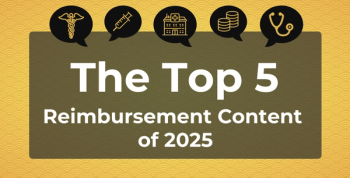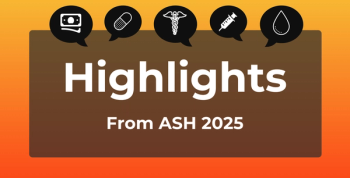
SGLT2i-Induced Erythrocytosis Not Linked to Clots in Type 2 Diabetes
Key Takeaways
- Sodium-glucose cotransporter 2 inhibitors (SGLT2is) increase hemoglobin and hematocrit levels, causing erythrocytosis in patients with type 2 diabetes without raising thrombotic event risks.
- The study compared SGLT2is with dipeptidyl peptidase 4 inhibitors or glucagon-like peptide 1 receptor agonists, showing higher erythrocytosis prevalence among SGLT2i users.
No increased risk of thrombotic events identified despite rise in erythrocytosis among sodium-glucose cotransporter 2 inhibitor (SGLT2i) users with type 2 diabetes, study finds.
Although sodium-glucose cotransporter 2 inhibitors (SGLT2is) are known to raise hemoglobin levels and induce erythrocytosis, a new study of adults with type 2
This retrospective cohort study is published in
“In this large, nationwide cohort study of adult patients with type 2 diabetes in Israel, the use of SGLT2is, compared with DPP-4is [dipeptidyl peptidase 4 inhibitors] or GLP-1RAs [glucagon-like peptide 1 receptor agonists], was associated with a higher prevalence of erythrocytosis over time, as reflected by elevated hemoglobin and hematocrit levels,” wrote the researchers of the study. “These findings were consistent across a range of predefined subgroup analyses and were not influenced by the specific definition of erythrocytosis applied.”
SGLT2is are known for improving cardiovascular and renal outcomes in patients with T2D. 2 In addition to these benefits, SGLT2is have been consistently shown to raise hemoglobin and hematocrit levels. A systematic review and meta-analysis found that using agents such as canagliflozin, dapagliflozin, empagliflozin, and ipragliflozin significantly increased hemoglobin levels by a mean difference of 5.60 g/L (95% CI, 3.73-7.47; P < .00001) and hematocrit by 1.32% (95% CI, 1.21-1.44; P < .00001), compared with placebo.
The current study analyzed data from Israel’s largest health care organization between January 1, 2015, and June 30, 2024.1 Adults aged 18 years or older with T2D who newly initiated SGLT2is were identified and compared with new users of DPP-4is or GLP-1RAs. The primary outcomes included new-onset erythrocytosis within 1 year of drug initiation and the incidence of arterial and venous thrombotic events throughout follow-up. Hemoglobin and hematocrit changes were also assessed.
After propensity score matching, the study included 137,552 adults in the SGLT2i vs. DPP-4i cohort and 131,512 in the SGLT2i vs. GLP-1RA cohort. Among SGLT2i users, the prevalence of erythrocytosis increased by 5.5% (95% CI, 5.1%-5.8%) compared with DPP-4i users and by 5.8% (95% CI, 5.4%-6.2%) compared with GLP-1RA users. In the SGLT2i vs. GLP-1RA cohort, hemoglobin increased by 0.37 g/dL (95% CI, 0.36-0.38) and hematocrit by 1.50% (95% CI, 1.48%-1.53%).
Male sex (adjusted odds ratio [AOR], 4.12; 95% CI, 3.80-4.48), smoking (AOR, 2.00; 95% CI, 1.85-2.16), and use of empagliflozin vs. dapagliflozin (AOR, 1.16; 95% CI, 1.09-1.25) were independently associated with a higher risk of erythrocytosis.
Importantly, erythrocytosis was not linked to an increased risk of thrombotic events for myocardial infarction (HR, 0.92; 95% CI, 0.58-1.44), stroke (HR, 1.26; 95% CI, 0.84-1.90), and venous thromboembolism (HR, 1.56; 95% CI, 0.68-3.60).
However, the researchers noted several limitations, including the possibility of residual confounding, being limited to patients with T2D, and being observational in design. Furthermore, SGLT2i dosage was not captured or analyzed, which may have influenced outcomes, particularly for dapagliflozin.
Despite these limitations, the researchers believe the study offers reassurance about the cardiovascular safety of SGLT2i-induced erythrocytosis.
“In this large, nationwide, population-based cohort study of adult patients with type 2 diabetes, initiation of SGLT2is compared with GLP-1RAs and DPP-4is was associated with a higher risk of new-onset erythrocytosis and a significant increase in both hematocrit and hemoglobin levels,” wrote the researchers. “However, erythrocytosis was not linked to a higher risk of thrombotic events, including myocardial infarction, venous thromboembolism, and stroke.”
References
1. Lewis M, Burrack N, Heymann A, et al. Sodium-glucose cotransporter 2 inhibitors, erythrocytosis, and thrombosis in adults with type 2 diabetes. JAMA Netw Open. 2025;8(6):e2517086. doi:10.1001/jamanetworkopen.2025.17086
2. Kanbay M, Tapoi L, Ureche C, et al. Effect of sodium-glucose cotransporter 2 inhibitors on hemoglobin and hematocrit levels in type 2 diabetes: a systematic review and meta-analysis. Int Urol Nephrol. 2022;54(4):827-841. doi: 10.1007/s11255-021-02943-2
Newsletter
Stay ahead of policy, cost, and value—subscribe to AJMC for expert insights at the intersection of clinical care and health economics.








